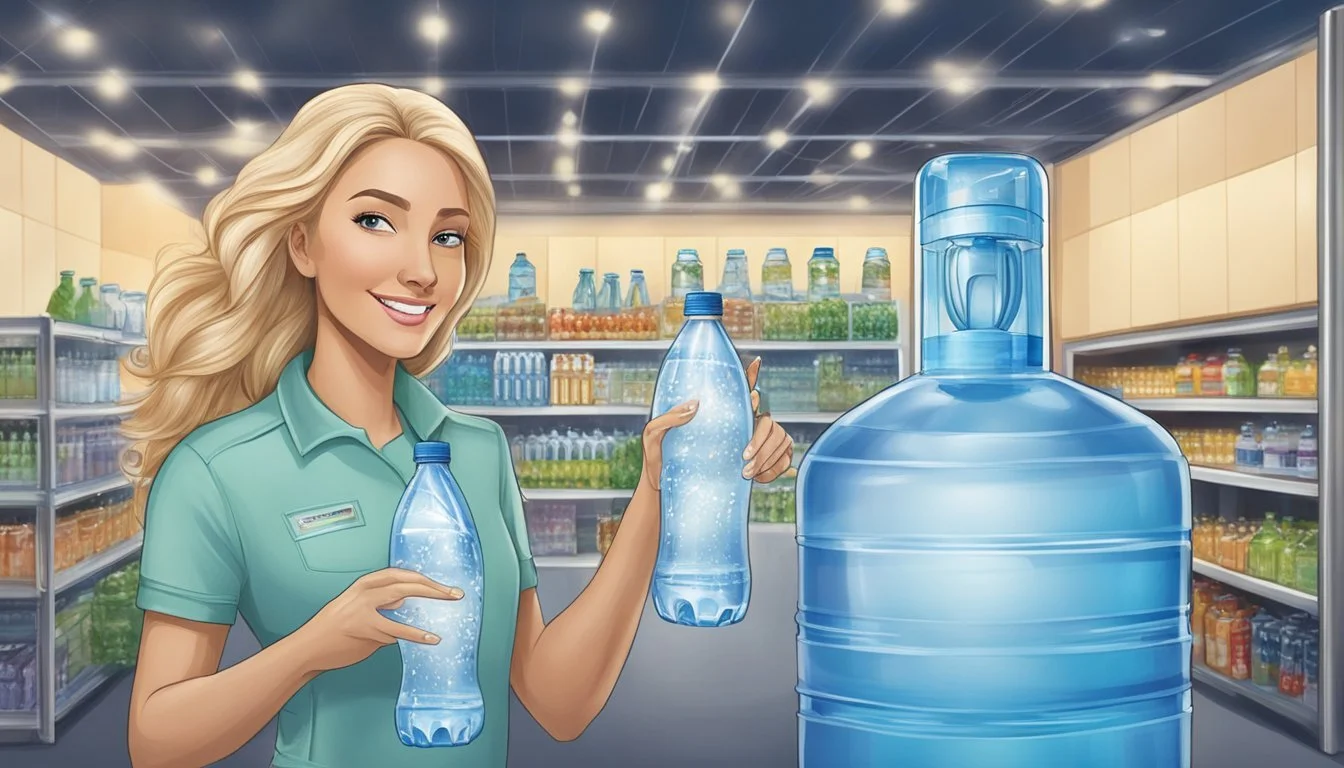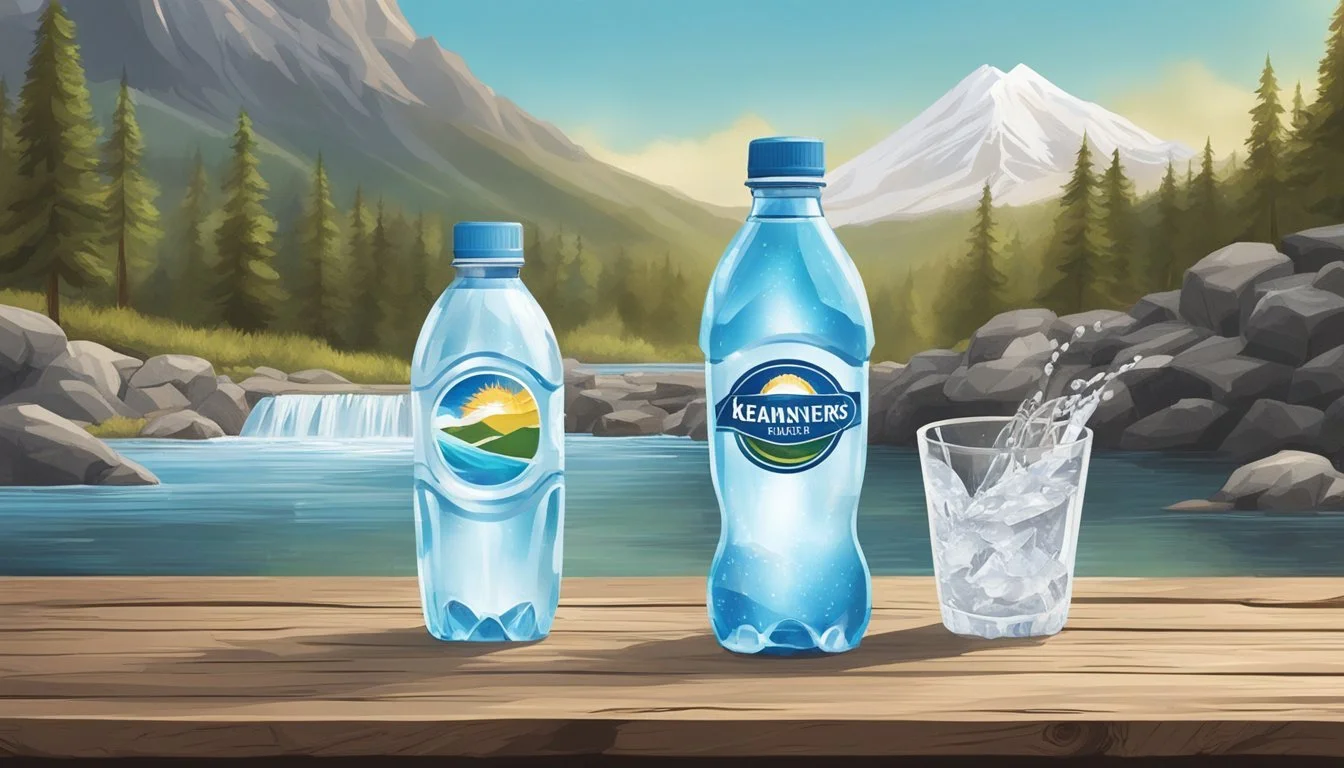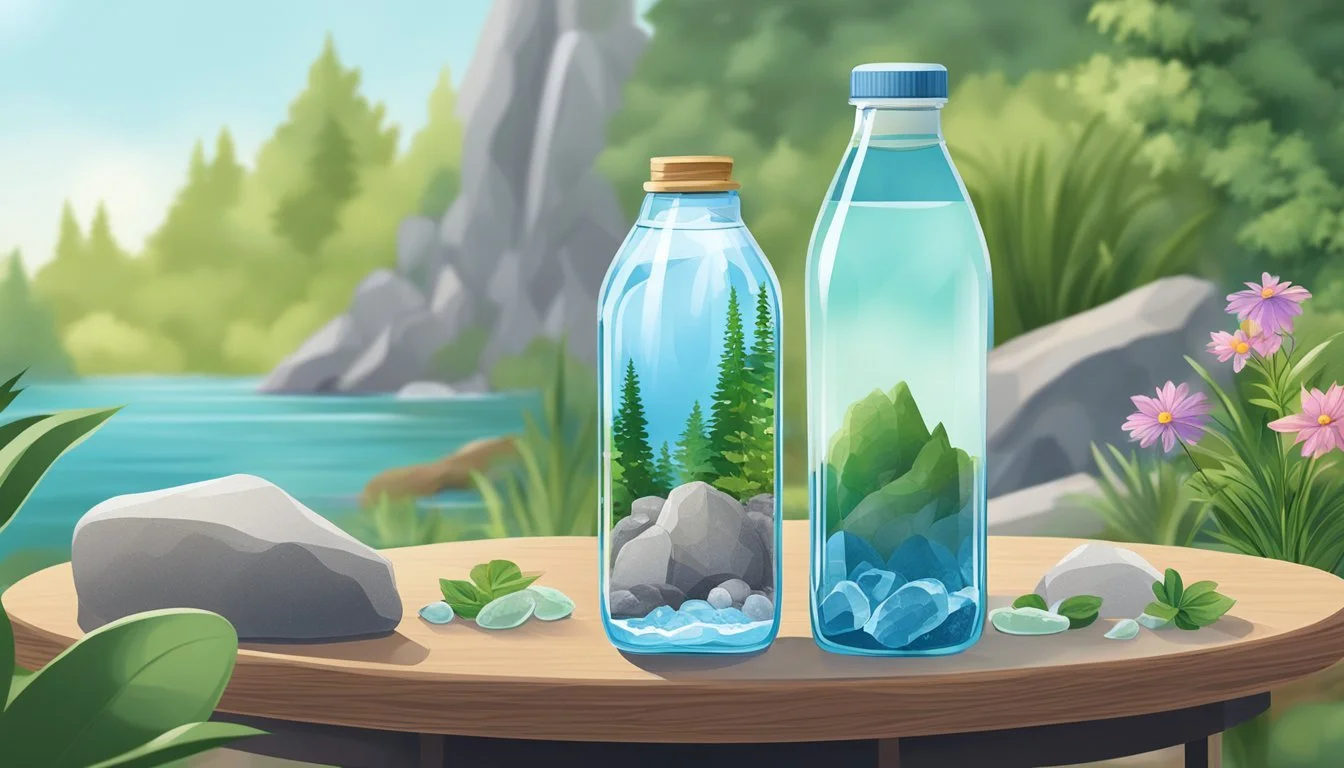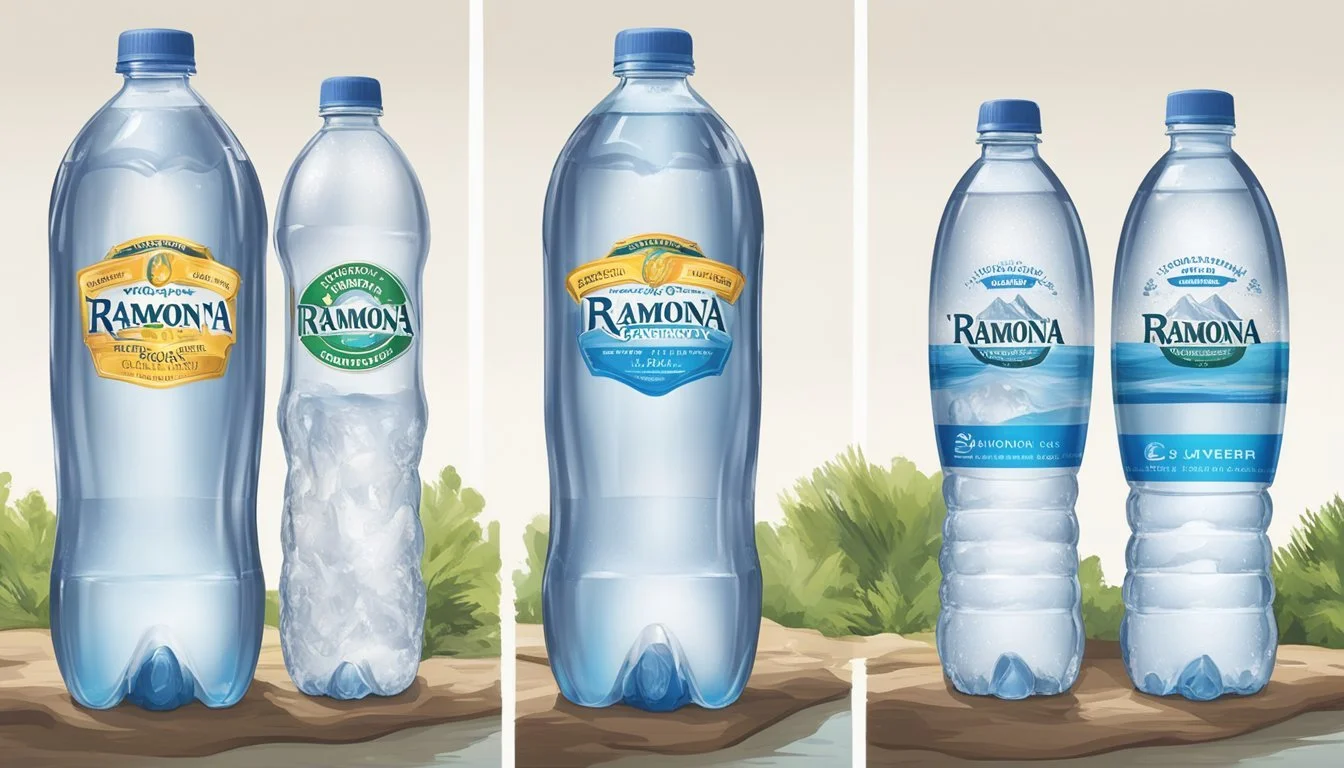Crystal Geyser vs. Ramona
Comparing Bottled Water Quality
When it comes to bottled water choices, Crystal Geyser and Ramona stand out as two prominent brands. Both have their loyal followers and distinct characteristics that set them apart. Crystal Geyser is known for its affordability and straightforward spring water claims. Yet, it has a mild taste that doesn’t particularly excite enthusiasts.
Ramona, on the other hand, often earns accolades for its refreshing and crisp flavor. Consumers who prefer a more detoxified and mineral-rich profile might lean towards Ramona. Overall, for those prioritizing taste and a premium hydration experience, Ramona may have the edge.
The debate between Crystal Geyser and Ramona centers not just around flavor but also around the transparency of their sourcing and treatment processes. With each brand providing a unique approach to bottled water, the choice ultimately depends on individual preferences and values.
Overview of Bottled Water Industry
The bottled water industry has seen significant growth and diversification. In recent years, bottled water has emerged as a convenient and popular beverage, driven by both health consciousness and the rise of portable, on-the-go products.
Understanding Bottled Water
The bottled water market is categorized mainly into purified water and mineral water. Purified water typically undergoes processes like distillation, deionization, or reverse osmosis to remove impurities. On the other hand, mineral water contains minerals and trace elements, often sourced from springs.
Brands like Aquafina and Dasani, produced by giants PepsiCo and Coca-Cola respectively, dominate the purified water segment. Mineral waters, such as Evian and San Pellegrino, boast naturally high mineral content. The appeal of each type lies in their perceived health benefits and distinct tastes.
Key Brands in the Market
Several brands have become household names. Aquafina, with its strict purification process, assures consistent quality. Dasani emphasizes its clean taste, enhanced with minerals. Fiji water, sourced from an artesian aquifer in the Fiji Islands, markets itself on its purity and soft, smooth taste.
Premium brands like Voss and Core are known for their sleek, stylish packaging and balanced pH levels. Essentia focuses on its high pH level, promoting hydration and performance. Regional brands like Poland Spring and Zephyrhills highlight their natural spring sources, appealing to those seeking authentic spring water.
In sparkling water, Perrier and San Pellegrino lead with their distinctive carbonation and flavors. Nestle Pure Life remains a staple in many households, and Smartwater sets itself apart with its vapor-distilled purity and added electrolytes.
The industry's growth is as much about the variety of choices as it is about the essential role of hydration in daily life.
Analyzing the Contenders
Crystal Geyser and Ramona offer distinctive qualities and practices that significantly influence their bottled water products. Both brands emphasize the importance of water sourcing and purification methods.
Crystal Geyser: Company Profile and Practices
Crystal Geyser sources its water from natural Alpine springs, particularly in California, ensuring a high standard of quality. The water is marketed as natural spring water, known for its clean taste and natural mineral content.
The company, CG Roxane, prides itself on providing an alkaline water option with a balanced pH level. Crystal Geyser emphasizes environmental stewardship, using sustainable practices in their bottling operations and minimizing plastic waste through efficient packaging methods.
Consumers appreciate Crystal Geyser for its transparency regarding the purification process, which ensures the water remains free from contaminants while preserving its natural mineral content.
Ramona: Brand Overview and Methods
Ramona takes a different approach, focusing heavily on innovative purification techniques to deliver fresh, high-quality water. The brand sources its water from multiple locations, aiming to achieve a consistent taste and quality regardless of the source.
Ramona undergoes a rigorous purification process that includes multiple filtration and treatment stages. This method removes impurities while maintaining essential minerals.
The company emphasizes sustainability by investing in eco-friendly practices and using recyclable materials for packaging. Ramona's commitment to purity and sustainability resonates well with customers looking for reliable and environmentally conscious bottled water options.
Quality and Safety Comparisons
Evaluating Crystal Geyser and Ramona bottled water involves analyzing their pH levels, mineral content, safety standards, and overall environmental impact. Each factor plays a crucial role in determining the quality and safety of these bottled waters.
pH Levels and Mineral Content
Crystal Geyser boasts a pH level around 7, which is neutral, making it pleasant for most people. It contains a variety of minerals, including calcium and magnesium, which can enhance the water's taste and provide health benefits.
Ramona, meanwhile, has a slightly alkaline pH, typically ranging between 7.5 and 8. This higher pH suggests that it may have more electrolytes. It contains minerals like sodium and potassium, contributing to both taste and hydration.
Safety Standards and Water Testing
Both brands undergo rigorous safety tests to meet industry standards. Crystal Geyser complies with the FDA's guidelines and the Environmental Working Group's (EWG) standards for bottled water safety. Their water is tested for contaminants such as lead and harmful bacteria.
Ramona also adheres to stringent safety standards, conducting regular water testing to ensure it is free from harmful substances. They are transparent about their testing processes, which include checks for PFAS chemicals and other potential contaminants that might pose health risks, including cancer.
Environmental Impact and Sustainability
Sustainability efforts are evident in Crystal Geyser's practices, which focus on using recyclable packaging. The company is committed to reducing its carbon footprint by optimizing its transportation logistics and manufacturing practices.
Ramona takes similar steps, emphasizing the use of eco-friendly packaging made from recycled materials. They also invest in community water projects, aiming for a sustainable impact. Both companies face challenges with plastic usage, but they are making significant strides towards minimizing environmental harm and promoting safer and more sustainable water sources.
Consumer Experience
Consumers often evaluate bottled water based on taste, convenience of packaging, and brand loyalty. Here's a deeper look into how Crystal Geyser and Ramona stand on these fronts.
Taste Profiles and Water Sommelier Insights
Crystal Geyser offers a crisp and clean taste. Its spring water origin appeals to those who prefer a natural, unaltered taste. Water sommeliers often describe it as having a balanced mineral profile, making it a solid everyday choice. On the other hand, Ramona is known for its reverse osmosis purification process, which results in a more neutral flavor profile. This makes it versatile but sometimes less interesting to palates seeking distinct mineral notes.
Packaging and Usability
Crystal Geyser bottles are designed for convenience, featuring recyclable plastic which is lightweight and easy to handle. The clear labeling of spring sources adds to consumer trust. Ramona, meanwhile, often comes in more robust plastic bottles, making them a bit sturdier but slightly less portable. Both brands offer various sizes, but Ramona has a slight edge with its range of sparkling and carbonated water options.
Market Perception and Brand Loyalty
Crystal Geyser enjoys a favorable market perception due to its affordability and consistent quality. Its sourcing transparency strengthens consumer trust and loyalty. Ramona, though less widely known, has a dedicated following among those who appreciate its purified, reverse osmosis water and innovative packaging. While Crystal Geyser is seen as a reliable staple, Ramona appeals more to niche markets and discerning consumers.
In summary, each brand brings unique aspects to the table, influencing consumer experiences in distinct ways.
Comprehensive Analysis
A detailed comparison between Crystal Geyser and Ramona bottled water involves examining their treatment processes, sources, and purity test results to provide a clear understanding of which brand offers superior quality.
Treatment and Purification Processes
Crystal Geyser prides itself on minimal treatment, opting for a natural approach by bottling water directly at the spring. This means no added minerals, making the water as close to its original state as possible. The water is naturally filtered and subjected to frequent quality checks.
Ramona, on the other hand, incorporates a multistep purification process. This often includes microfiltration, reverse osmosis, and ultraviolet light treatment. Such processes ensure that any contaminants are removed, resulting in water that is purified to a high standard.
Comparison:
Crystal Geyser: Bottling at the source, minimal treatment.
Ramona: Multistep purification, including microfiltration and reverse osmosis.
Source and Origin Verification
Crystal Geyser sources its water from various springs across the United States, prominently from locations in Maine, Michigan, and Pennsylvania. These springs are chosen based on strict criteria to ensure natural purity and freshness. Transparency is emphasized, with clear information about the source provided on the labels.
Ramona sources its water from multiple wells, primarily in Florida. Each well undergoes rigorous testing and must meet stringent safety standards. Ramona also ensures transparency by offering detailed reports on the origin and quality of their water sources.
Key Points:
Crystal Geyser: Springs in Maine, Michigan, Pennsylvania.
Ramona: Wells in Florida with detailed origin reports.
Water Quality Test Results
Crystal Geyser water is tested regularly for contaminants. Reports indicate that it may contain naturally occurring minerals like fluoride in trace amounts, ranging from 0 to 0.7 parts per million. It meets safety standards, with no significant presence of harmful substances such as arsenic.
Ramona's test results show similar diligence in ensuring safe drinking water. The brand frequently publishes its results, often displaying no contaminants or dangerous pollutants. The focus on detailed purification processes translates to very clean and safe water.
Summary of Findings:
Crystal Geyser: Regular testing, trace fluoride, safe from major contaminants.
Ramona: Frequent publication of results, high purity, contaminant-free.
Regulatory and Ethical Considerations
This section discusses the compliance of Crystal Geyser and Ramona with safe drinking water regulations, as well as their ethical practices in bottling and distribution. The primary focus is on ensuring water quality and adherence to environmental standards.
Compliance with Safe Drinking Water Acts
Both Crystal Geyser and Ramona must adhere to the Safe Drinking Water Act (SDWA) standards. Compliance ensures that the bottled water is free from harmful contaminants and meets federal and state regulations for safety and quality.
However, Crystal Geyser has faced legal challenges in the past. For instance, CG Roxane, LLC, which produces Crystal Geyser, pleaded guilty to unlawfully storing hazardous waste created during the filtration of arsenic from its spring water. This incident demonstrates the importance of strict compliance to avoid contamination.
Ramona, a local New York brand, consistently meets safety standards and has not been involved in similar legal issues. Their proactive quality control measures include regular testing for contaminants such as microplastics and sodium levels.
Such regulatory adherence is critical to ensuring safe drinking water for consumers and maintaining public trust in bottled water brands.
Ethical Bottling and Distribution Practices
Ethical practices in bottling and distribution involve environmentally responsible actions and transparency regarding water sources. Crystal Geyser and Ramona differ significantly in this regard.
Crystal Geyser faced criticism for issues related to environmental contamination and lack of transparency. Storing and transporting hazardous waste, as previously mentioned, raised concerns about their bottling practices.
Ramona, by contrast, emphasizes ethical sourcing and minimal environmental impact. Their sourcing practices avoid over-extraction of local water supplies, unlike some larger brands like Nestlé Waters, known for controversial practices related to Arrowhead Water.
By focusing on ethical practices, Ramona aims to offer not only safe but also responsibly sourced bottled water options. The ethical approach ensures both long-term sustainability and consumer confidence.
Ultimate Verdict
Crystal Geyser is often marketed as a natural spring water, sourced from multiple springs across the United States. Many consumers appreciate its clean taste. Ramona, on the other hand, may not be as well-known but has garnered positive reviews for its quality and taste.
Pricing can be a determining factor. Crystal Geyser is generally more accessible and budget-friendly. Ramona tends to be on the pricier side, which might affect the decision for cost-conscious buyers.
Another aspect to consider is mineral content. Crystal Geyser typically contains a balanced mix of minerals, which some consumers appreciate. Ramona, marketed for its purity, often emphasizes minimal mineral content, appealing to those seeking a clean, neutral palate.
Environmental impact is also a factor. Crystal Geyser has faced scrutiny for its plastic use, while Ramona often promotes more sustainable practices. This could influence eco-conscious consumers in making a choice.
Taste preferences play a crucial role. Crystal Geyser has a consistent taste profile that appeals to a broad audience. Ramona's taste can be described as more refined, catering to those with specific tastes.
Aspect Crystal Geyser Ramona Taste Clean and consistent Refined and neutral Price Budget-friendly Premium-priced Minerals Balanced mix Minimal Sustainability Faces scrutiny Promotes sustainable practices
Consumers need to weigh these factors based on their preferences to decide the best option for their needs.
More About Crystal Geyser
Acqua Pana vs Crystal Geyser: Which Bottled Water is Better?
Alkaline88 vs Crystal Geyser: Which Bottled Water is Better?
Aqua Carpatica vs Crystal Geyser: Which Bottled Water is Better?
Boxed Water vs Crystal Geyser: Which Bottled Water is Better?
Cascade Mountain vs Crystal Geyser: Which Bottled Water is Better?
Castle Rock vs Crystal Geyser: Which Bottled Water is Better?
Core Hydration vs Crystal Geyser: Which Bottled Water is Better?
Crystal Geyser vs CBD Living: Which Bottled Water is Better?
Crystal Geyser vs Crystal Lake: Which Bottled Water is Better?
Crystal Geyser vs Essence pH10: Which Bottled Water is Better?
Crystal Geyser vs Kirkland Signature: Which Bottled Water is Better?
Crystal Geyser vs Open Water: Which Bottled Water is Better?
Crystal Geyser vs Proud Source: Which Bottled Water is Better?
Crystal Geyser vs Richard's Rainwater: Which Bottled Water is Better?
Crystal Geyser vs Simple Truth: Which Bottled Water is Better?
Crystal Geyser vs Talking Rain AQA: Which Bottled Water is Better?
Crystal Geyser vs Weird Water: Which Bottled Water is Better?
Crystal Geyser vs Whole Foods 365: Which Bottled Water is Better?
Hawaii Volcanic vs Crystal Geyser: Which Bottled Water is Better?
Hawaiian Springs vs Crystal Geyser: Which Bottled Water is Better?
Ice Mountain vs Crystal Geyser: Which Bottled Water is Better?
Icelandic Glacial vs Crystal Geyser: Which Bottled Water is Better?
Just Water vs Crystal Geyser: Which Bottled Water is Better?
Liquid Death vs Crystal Geyser: Which Bottled Water is Better?
Mountain Valley Spring Water vs Crystal Geyser: Which Bottled Water is Better?
Nestle Pure Life vs Crystal Geyser: Which Bottled Water is Better?
Poland Spring vs Crystal Geyser: Which Bottled Water is Better?
Purely Sedona vs Crystal Geyser: Which Bottled Water is Better?
San Pellegrino vs Crystal Geyser: Which Bottled Water is Better?
Smartwater vs Crystal Geyser: Which Bottled Water is Better?
Solan de Cabras vs Crystal Geyser: Which Bottled Water is Better?
Topo Chico vs Crystal Geyser: Which Bottled Water is Better?
Whole Foods Italian Still Mineral water vs Crystal Geyser: Which Bottled Water is Better?
Zephyrhills vs Crystal Geyser: Which Bottled Water is Better?








